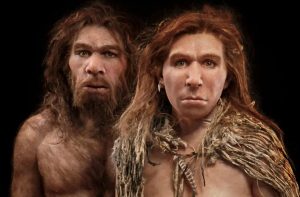Scientists Pinpoint the Likely Location of Human-Neanderthal Interbreeding

 While it’s long been established that Homo sapiens and Neanderthals interbred, recent studies have focused on when this happened. Now, a new study published in Scientific Reports has pinpointed where this interbreeding likely took place.
While it’s long been established that Homo sapiens and Neanderthals interbred, recent studies have focused on when this happened. Now, a new study published in Scientific Reports has pinpointed where this interbreeding likely took place.
Researchers analyzed the geographic distribution of both species in southwest Asia and southeast Europe during the late Pleistocene, the period when the two species are known to have interacted.
Their findings suggest that the interbreeding likely occurred in the Zagros Mountains, a mountain range spanning modern-day Iran, northern Iraq, and southeastern Turkey.
The Zagros Mountains would have provided an ideal environment for these encounters. The region’s varied biodiversity and topography could have sustained large human populations and attracted groups from other areas, serving as a natural bridge between the cooler Palearctic region and the warmer Afrotropical region during Pleistocene climate changes.
This location aligns with both archaeological and genetic evidence. The Zagros Mountains are home to numerous archaeological sites containing remains of both Neanderthals and early Homo sapiens.
One notable site is Shanidar Cave in northern Iraq, where the best-preserved Neanderthal skeleton ever found was discovered, alongside evidence of a possible ritual burial involving pollen-covered remains.
Around the same time Neanderthals inhabited the region, the Persian Highlands also played a crucial role in the migration of Homo sapiens out of Africa. This supports the idea that the area was a key meeting point for these human species during the time interbreeding is known to have occurred.
The legacy of this ancient interbreeding still exists in modern populations. Since the Neanderthal genome was first sequenced in 2010, it has been shown that between 1 and 4 percent of the DNA in non-African populations comes from Neanderthals.
These genetic contributions affect a wide range of human traits, including facial features, pain sensitivity, and susceptibility to conditions like COVID-19 and depression.




